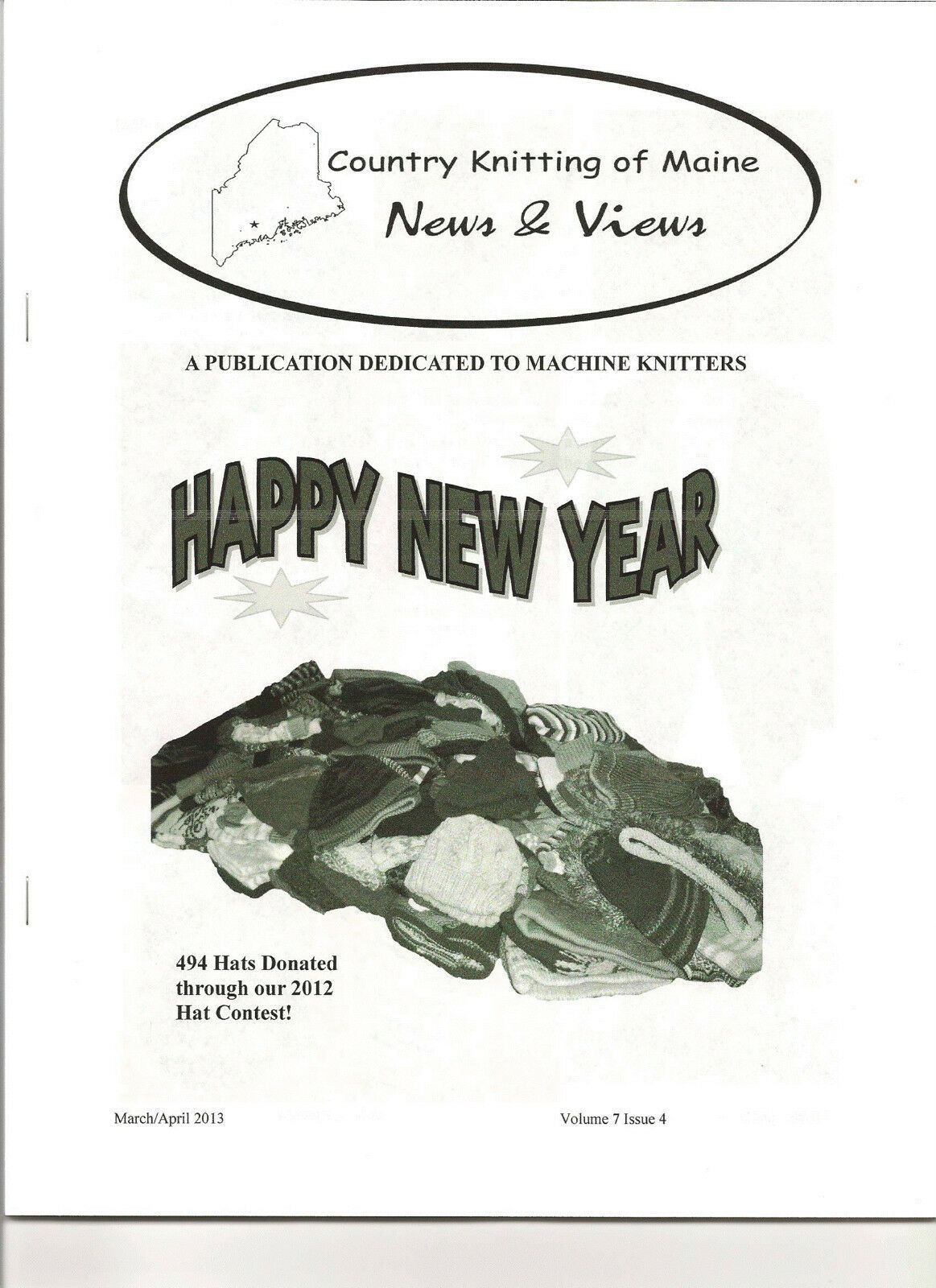-40%
Book Inspiration of Lace By Kathleen Kinder - First Printing in November 2012
$ 13.2
- Description
- Size Guide
Description
This is a brand new book written by Kathleen Kinder. This book has never been published before. This is for machine knitters as well as hand knitters.The following is a description of the brand lace knitting book by Kathleen
Kinder that is now available. Kathleen Has done a wonderful job once more. This
is for hand knitting and lace knitting and is 116 pages long.
The cover is in color and the rest is in black and white
but they come out quite nicely. You can see the stitch work excellently. The
book weighs 11 ounces. These will be available only through Country Knitting of
Maine.
From Kathleen:
The publication of this book is a great occasion. I never expected it to happen.
I am a founder member of the Knitting & Crochet Guild (UK). It was established
in 1978 to encourage the crafts of hand and domestic machine knitting and
crochet. Its founding principles are Education, Innovation and Preservation.
Over the years the KC&G has accumulated a quite unique Collection of
publications, patterns and tools going back to at least Victorian times (some
items earlier). More importantly, it now owns a large collection of hand,
machine- knitted and some frame-knitted lace (as well as crochet). These are
housed at Lee Mills near Huddersfield in Yorkshire.
In 2006, I responded to a suggestion in Slipknot the Guild's magazine that
someone do a study of one of the historic items in the Collection. I chose a
finely hand-knitted 1891 sampler of 63 patterns in the Collection.. The
arrangement was for the K&CG to publish my study which took 10 months of solid
work. For various reasons this did not happen. I forgot all about the CD until
Linda Williams wrote and asked if I had anything new for knitters. I sent the
CD to her and she immediately recognised the real value of what I had achieved..
The work contains material and insights into lace knitting which no one has ever
written about before .
As many people will know, my main knitting, teaching and writing career has been
concerned with machine knitting., but I am also deeply interested in and have a
real love of hand knitting. That is not the only reason why I have brought the 2
crafts together in this book I knew for a study to have integrity I needed to
include in its brief the ancestor of modern domestic machine knitted lace,
the lace from the 18th and 19th c hand frame. In 1977, I made 2 visits to the
Framework Museum at Ruddington near Nottingham and was allowed to photograph
examples of the beautiful knitted lace produced on these early machines. What
really encouraged me is that fact that in the K&CG Collection in Lee Mills
there are lace examples from all 3 knitting crafts as well as copies of very
old publications, and I was very kindly allowed to photograph, read and handle
all that I required.. It was through my close examination and knitting of the
Sampler's various lace patterns that I really came made some very intriguing
discoveries in relation to the structure of lace patterning.
Here's what's in the book. First, there is an illustrated article of The History
of Knitted Lace, again quite unique because it draws on all 3 knitting crafts,
giving clear indication of cross-fertilisation Basing my conclusions not only
on 19th c hand knitting publications but also on written 18th c and early 19th c
framework records as well as on analysis of pattern structure, I offer
suggestions regarding which patterns were the originals and which were
adaptations or copies. I found I could often relate my findings to many of the
patterns on the Sampler.
Next follows a chapter on The Background to Charts and Symbols. It may surprise
readers to know that they go back a long way too. I explain that I used no
expensive programme to chart the lace patterns but simply, MS Paint, in
Accessories on every PC. I employ the commonly accepted Japanese symbols. There
is a page of those and a page of abbreviations before the study of each of the
63 patterns, each charted and written out for those who can't cope with charts.
I could not have done the work without my charting expertise. You can see
exactly from a chart how a pattern is formed and how it is to be knitted. The
penultimate section is for machine knitters, with 20 patterns especially for
them, but also for hand knitters too. I conclude with how to design,draw and
annotate the schematics for simple garment shapes. There is a comprehensive
book list and some web sites to look up. In all, I've done my best to ensure the
book is a rich resource for hand and machine knitters, and it would not have
seen the light of day but for Linda Williams. I owe her a great debt of
gratitude indeed.
I now own the copyrights to all of Kathleen Kinders self published books and they will all be available through ebay soon.
Please ask all questions before bidding.
inkFrog Analytics




















